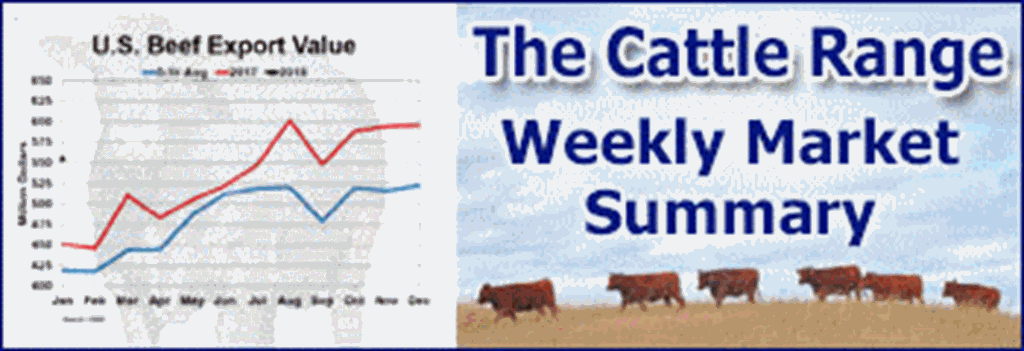Derrell S. Peel, Oklahoma State University
U.S. beef exports increased 2.1 percent year over year in May, contributing to a 5.9 percent year over year increase for the first five months of the year. Beef exports are growing more slowly so far this year, but the increase is on top of record exports in 2021. Forecasts suggest that total beef exports for the year may end up about equal to last year or down slightly. The strong U.S. dollar may provide additional headwinds for beef exports going forward.
The six major markets for beef exports thus far in 2022 are: South Korea (23.6 percent share); Japan (22.6 percent); China/HK (19.0 percent); Canada (7.6 percent); Mexico (7.6 percent) and Taiwan (6.6 percent). Beef exports to the China/HK market are up 17.2 percent year over year for the year-to-date, still a robust rate of growth, but significantly slower compared to one year ago when exports were up nearly 163 percent over the same period in 2020. Exports to Taiwan are up 35.3 percent for the year to date and exports to South Korea are up 2.0 percent year over year so far this year. Exports to Japan are down 3.6 percent, with Mexico down 18.4 percent and Canada down 1.1 percent year over year for the year to date. The top six markets account for 87.1 percent of total beef exports so far this year, down from 89.7 percent last year.
Beyond the top six markets, the remaining 12.9 percent of beef exports (up from 10.3 percent last year) are spread over 121 diverse destinations. None of these smaller markets individually account for more than 1.5 percent of exports and most are less than 0.5 percent. However, many of these small markets are growing and are contributing, at least collectively, to a more robust set of export markets for U.S. beef. These smaller markets are in all parts of the globe, including Central America and the Caribbean, South America, Europe, the Middle East, Africa and Asia. In addition to the top six, the top twenty beef export markets include Indonesia, Philippines, Netherlands, Guatemala, Dominican Republic, Vietnam, Colombia, Chile, United Arab Emirates, Costa Rica, Kuwait, Singapore, Bahamas and Panama.
General discussion of exports is usually focused on total quantities (or values). Beef exports are a component of the total demand for the many different beef products that are produced by the beef industry. Most beef exports are specific sets of products for specific markets. The impacts on specific beef product markets change as exports grow and evolve and this, in turn, has variable impacts on domestic markets for beef products. The impact of beef exports is greater than the direct quantity of products sold in international markets. In many cases, exports also improve domestic beef markets by providing a destination for beef products that would otherwise detract from domestic beef demand. Beef exports help to match the set of beef products in the domestic market to the highest value consumer preferences in the U.S.












